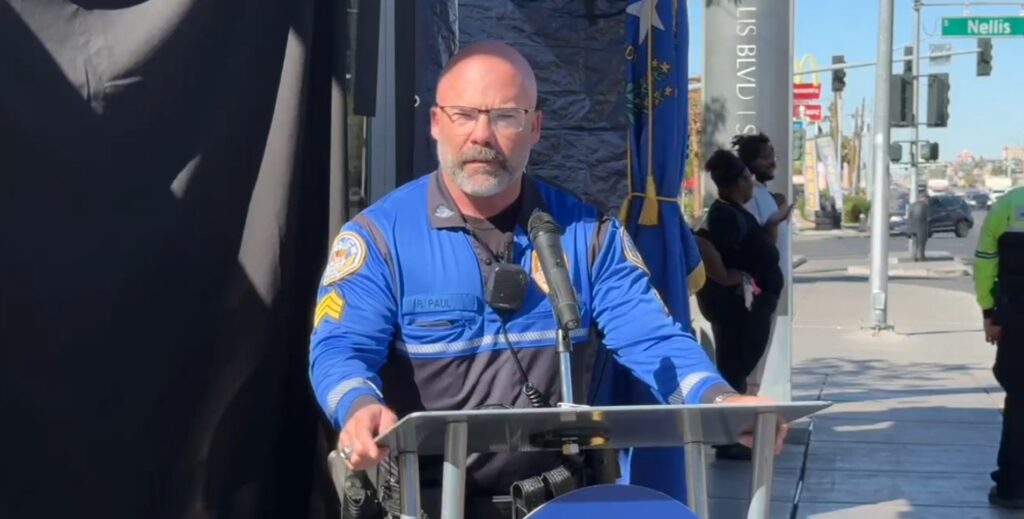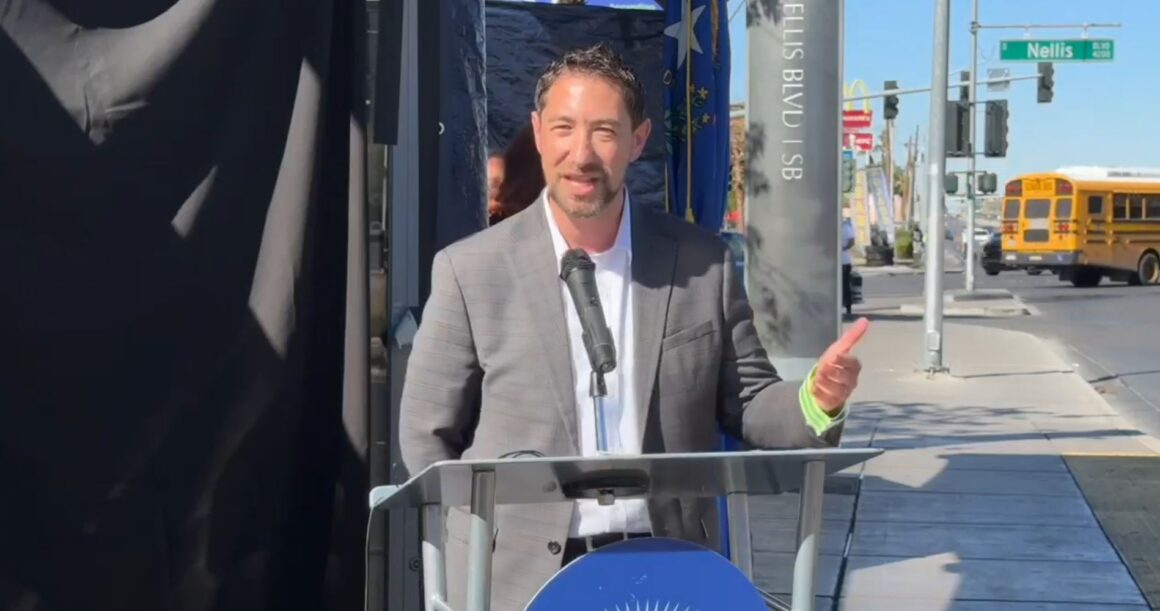As October fades into November, daylight leaves us earlier, and the streets of Las Vegas take on that familiar glow — headlights, traffic lights, and the sharp shimmer of neon bouncing off rain-dark pavement. It’s the season of short days and long shadows, and with it comes the annual Dusk 2 Dawn road and pedestrian safety campaign, a community reminder that visibility saves lives.
On Thursday morning, at a modest bus stop where the city’s pulse never really stops beating, Congresswoman Dina Titus, Commissioner Michael Naft, and local law enforcement unveiled a simple but profound message: “Can You See Me Now?”
The words, printed in bright reflective lettering, are as much a plea as they are a warning. It’s a statement for every pedestrian stepping off a curb, every cyclist pedaling home, every driver glancing up from a dashboard screen — see me, notice me, let me make it home alive.
The Shared Burden of the Road
The Dusk 2 Dawn campaign, supported by Clark County and numerous community partners, speaks to something larger than traffic enforcement. It’s about shared accountability.
Every crosswalk is a contract between people — one agreeing to yield, the other trusting they’ll be seen. Yet year after year, that contract is broken.
Statistics tell the story we try not to think about: dozens of pedestrian deaths every year in Clark County, many in low-light conditions, many at familiar intersections.
It’s not just numbers; it’s parents walking home from work, children heading to school, tourists crossing from one hotel to another. Behind every citation, there’s a moment that could have turned tragic.

During Thursday’s enforcement effort, Henderson Police Sgt. Paul reported 66 drivers stopped, 44 citations issued, and 19 warnings given in just one morning. “Our primary focus is traffic safety,” he said. The words are standard, but the intent runs deeper. Traffic safety is community safety. It’s the invisible thread holding together the everyday rhythm of our lives.
Visibility Is a Two-Way Street
There’s a cultural shift that campaigns like Dusk 2 Dawn are trying to inspire.
For drivers: slow down, look twice, expect pedestrians in the crosswalks — even when you think you won’t see any.
For pedestrians and cyclists: light yourself up like your life depends on it — because, too often, it does.
In a city that prides itself on brilliance, no one should fade into the dark. Reflective vests, bike lights, LED armbands — these are not fashion accessories, they’re survival gear. And in the hum of daily life, taking those extra seconds to make yourself visible can mean the difference between tragedy and relief.
When Awareness Becomes Habit
As Commissioner Naft observed at the event, “Every year, we see preventable tragedies simply because someone didn’t slow down or someone else assumed they were visible.”
He’s right. The hardest part of safety is not knowing what we think we know — that false confidence that creeps in when we drive the same route every day. We assume the light will stay green. We assume the driver sees us. We assume there’s time.
But Dusk 2 Dawn reminds us that safety is a practice — not an assumption.
It’s the habit of scanning the road one more time, of lifting your eyes before the turn, of putting the phone face-down while you drive. Awareness isn’t a reaction; it’s a way of being.
A City Learning to See
Las Vegas has made strides — from better-lit intersections to flashing crosswalks and high-visibility signage — yet the challenge remains behavioral. The hardest infrastructure to build is the one inside us: patience.
And patience is free.
It doesn’t require funding, grants, or steel poles — just the willingness to slow down and pay attention to another human being crossing the road.
The “Now You See Me” sign might hang at one bus stop, but its message belongs everywhere: on Sahara, on Tropicana, on Fremont, in Henderson and Summerlin and North Las Vegas. Because in a city that thrives on spectacle, sometimes the simplest visibility — a pedestrian in reflective shoes, a cyclist with a headlight — can be the most profound act of survival.
The Takeaway
As the campaign rolls through November, Clark County officials will continue to spread the message across schools, bus shelters, and digital channels. They’ll hand out reflective wristbands, lights, and pamphlets — but the real work starts with us.
Every Las Vegan who steps outside tonight is part of this story.
We all share the roads. We all share the responsibility.
When the lights dim, and the night takes over the valley, the question remains:
Will we see each other clearly enough to make it home?


Leave a Reply